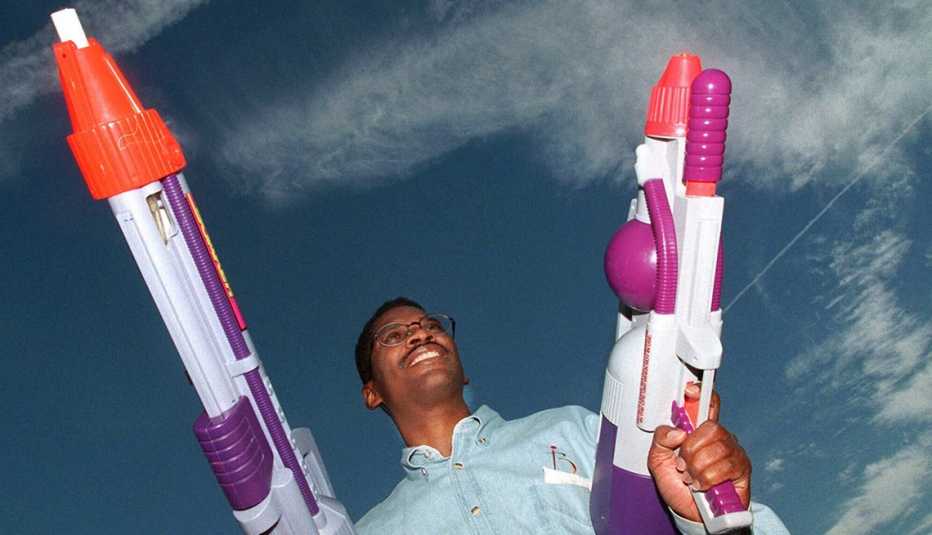Staying Fit


For millennials who pined for a Super Soaker back in the day, Hasbro plans to return three of the original designs to Target stores this spring.
The squirt guns on steroids first appeared in toy stores 30 years ago and flew off the shelves — 27 million were sold at $10 each during the first three years of production. And they remain a must-have for kids.


AARP Membership— $12 for your first year when you sign up for Automatic Renewal
Get instant access to members-only products and hundreds of discounts, a free second membership, and a subscription to AARP the Magazine.
By 2015, when the Super Soaker was admitted to the National Toy Hall of Fame in Rochester, New York, 200 million had been sold in more than 175 variations.
About Lonnie Johnson
Born: Oct. 6, 1949, in Mobile, Alabama
Education:
• Bachelor's degree in engineering, Tuskegee University, 1973
• Master's degree in nuclear engineering, Tuskegee, 1975
Occupation: U.S. Air Force airman, rocket scientist, inventor
Family: Wife, Linda Moore; four children. They live in Atlanta.
Fun fact: One of his early jobs was working on cooling systems for nuclear reactors at Oak Ridge National Laboratory in Tennessee.
Former NASA scientist Lonnie Johnson, a Tuskegee Institute-trained mechanical and nuclear engineer, came up with the idea for the high-power water blaster in 1982 while working at home on a design for a new heat pump. The first model was built from PVC pipe and an empty soda bottle, according to the Toy Hall of Fame.
While he worked at night on improving the design of what he called the Power Drencher, Johnson spent his days working on NASA's Galileo mission to Jupiter. NASA launched Galileo on Oct. 18, 1989 — around the time that Johnson founded Johnson Research and Development Co. in Atlanta and licensed the Super Soaker to Larami Corp., which Hasbro bought in 1995. The Super Soaker has been under Hasbro's Nerf subsidiary for about a decade.
"Lonnie Johnson is probably the most seriously overqualified toy inventor I can think of,” Chris Bensch, vice president of collections at Rochester's Strong Museum of Play, recently told MEL magazine. “Most toy inventors have a bright idea. They have that ‘eureka’ moment or they come up with something that they think is marketable or fun. But Lonnie certainly had more credentials than most."
Johnson, now 70, grew up in Mobile, Alabama, and while in high school built an air-powered robot that won a science fair at the University of Alabama in 1968. Aside from working on the Galileo mission, he worked on NASA's Mars Observer project and the Cassini mission, helping to design the robot probe that traveled to Saturn.
His inventions have included rechargeable battery technology and thermodynamic energy conversion technology, according to the Atlanta Journal Constitution. Johnson holds more than two dozen patents on a variety of inventions beyond toys including nanomachined electrodes, a portable multimedia projection system and a wet-diaper detector.

































































More on politics-society
Meet the 97-Year-Old Nobel Prize Winner
Lithium-ion pioneer John Goodenough helped spark the wireless revolutionFaith Ringgold: Artist, Author, Game Inventor
At 86, she’s made an app for creating art, Sudoku style